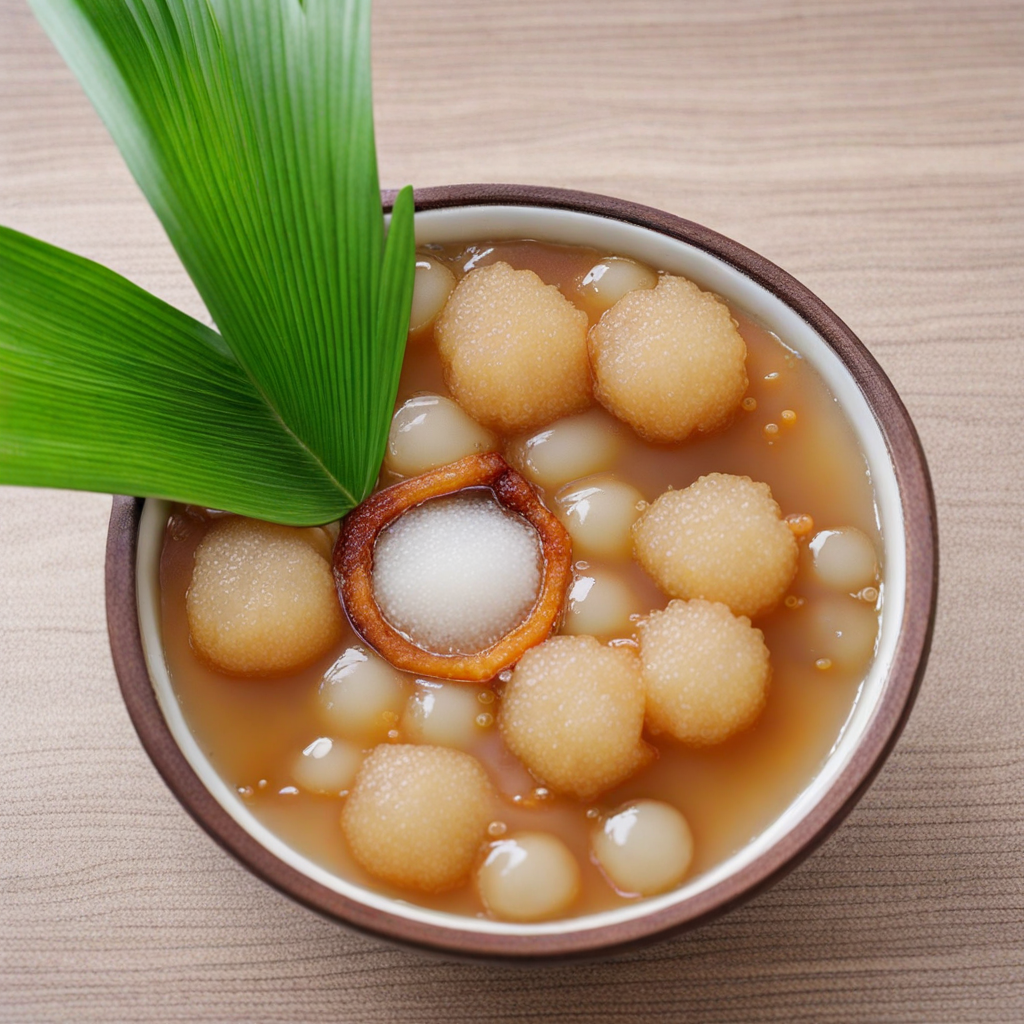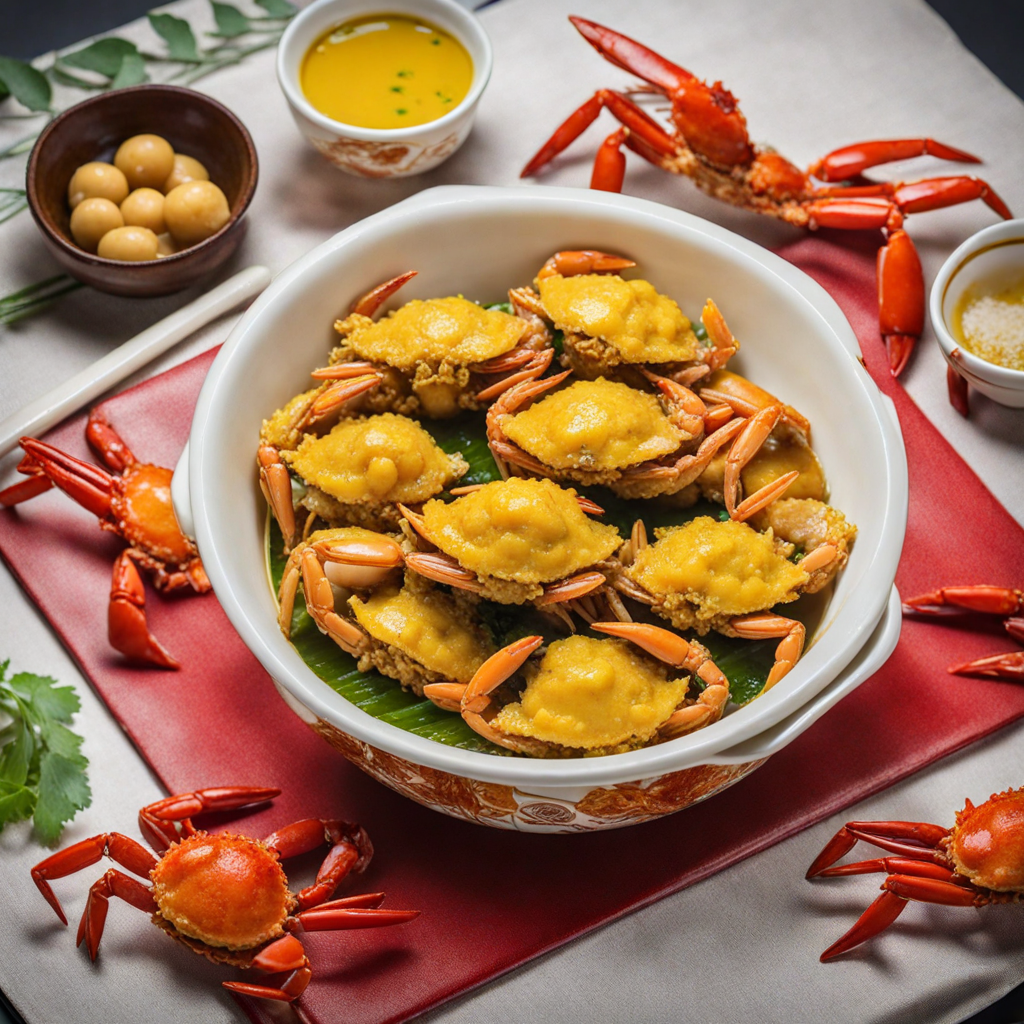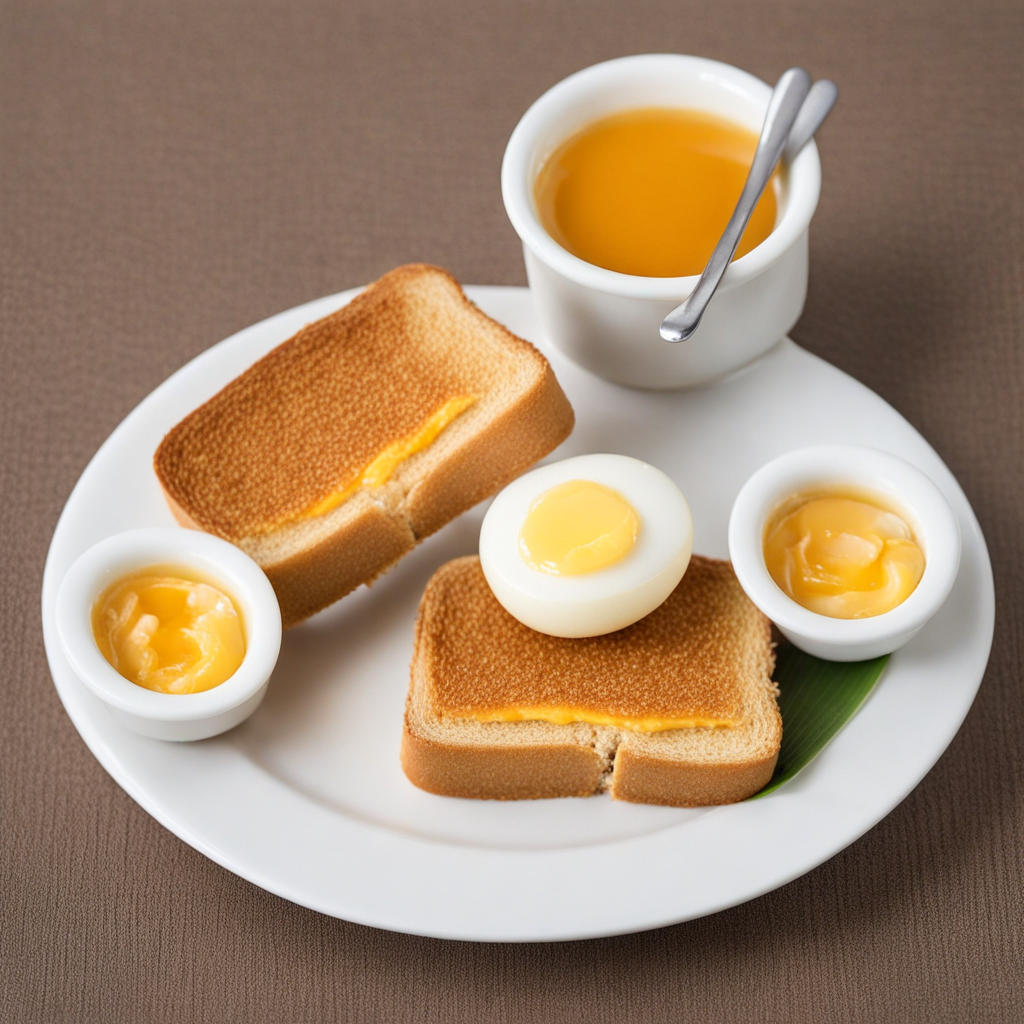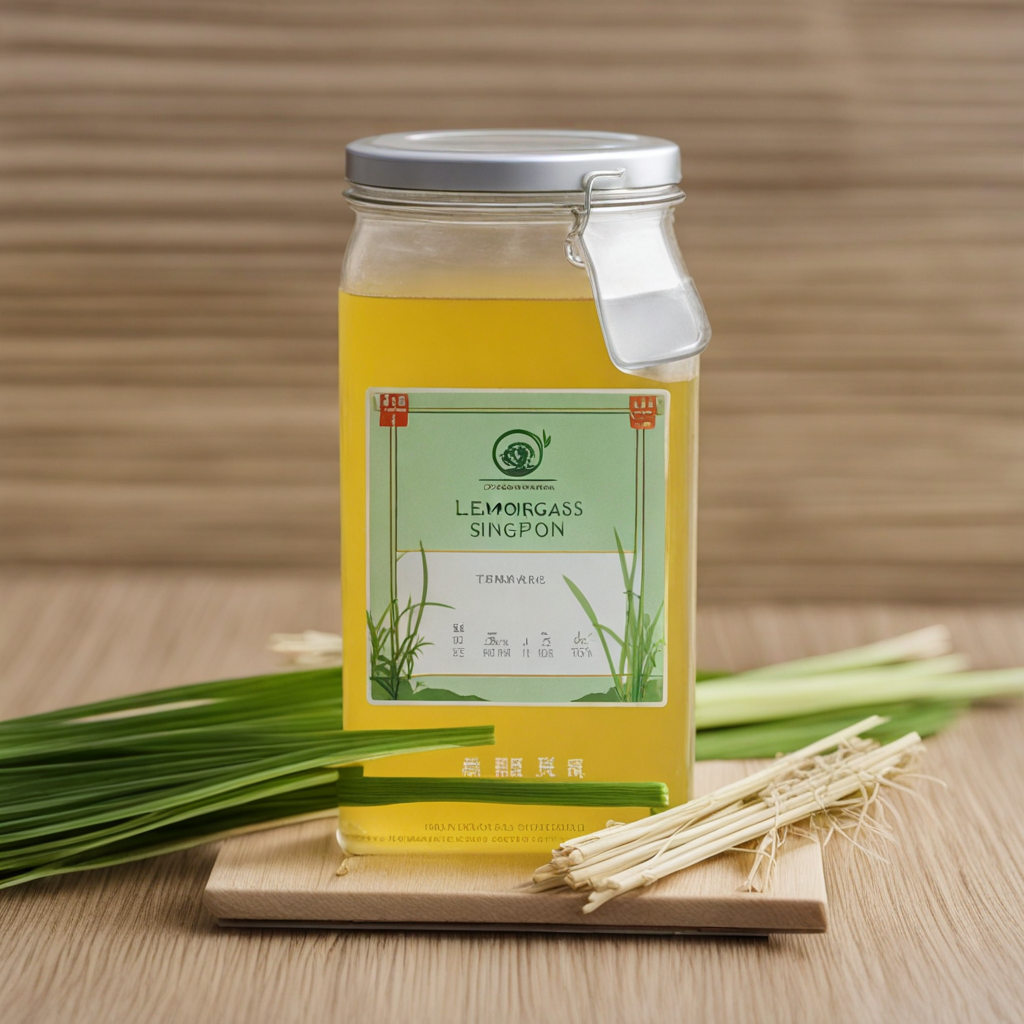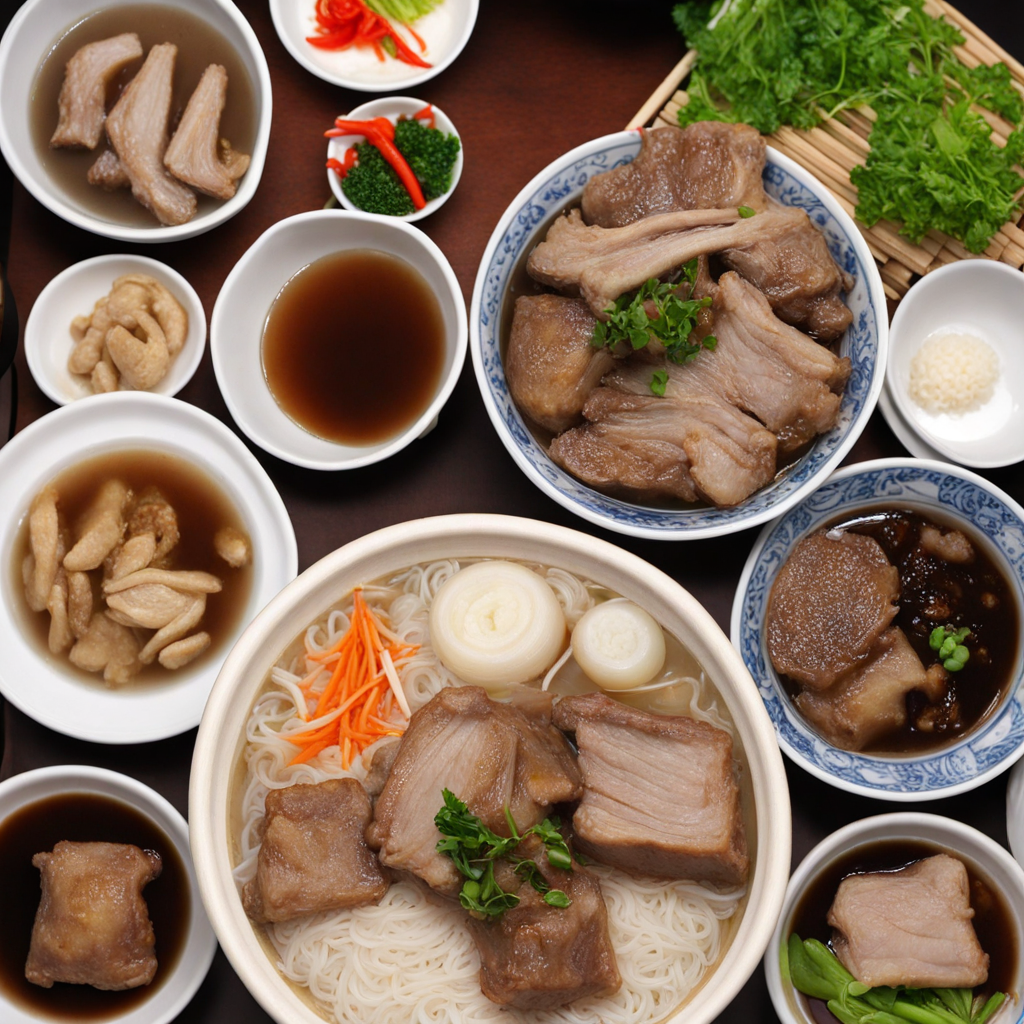Sago Gula Melaka
Sago Gula Melaka is a delightful dessert that hails from the vibrant culinary scene of Singapore. At its core, this dish features sago pearls, which are small, translucent balls made from the starch of the sago palm. When cooked, these pearls take on a soft, chewy texture that is incredibly satisfying. They are typically served chilled, offering a refreshing contrast, especially in Singapore's warm climate. The visual appeal of the dessert is enhanced by the sago pearls, which glisten like tiny gems, inviting you to take a bite. What truly elevates Sago Gula Melaka is the rich, fragrant syrup made from Gula Melaka, or palm sugar. This syrup has a deep, caramel-like flavor with hints of toffee and a slight smokiness, which beautifully complements the neutral taste of the sago. The syrup is often poured generously over the sago pearls, creating a luscious, sweet, and sticky coating that enhances every mouthful. Additionally, some variations include a drizzle of coconut milk, adding a creamy richness that balances the sweetness of the Gula Melaka. Every bite of Sago Gula Melaka is a harmonious blend of textures and flavors. The chewy sago pearls, the sweet and earthy Gula Melaka, and the creamy coconut milk combine to create an experience that is both indulgent and comforting. This dessert is not just a treat for the taste buds; it also offers a glimpse into the cultural tapestry of Singapore, reflecting a blend of traditions and ingredients that come together to create something truly unique. Whether enjoyed at a hawker center or a dessert shop, Sago Gula Melaka is a must-try for anyone looking to explore the diverse and delicious world of Singaporean cuisine.
How It Became This Dish
The Sweet Journey of 椰糖西米露 (Coconut Sugar Sago Dessert) #### Origins and Ingredients 椰糖西米露, or coconut sugar sago dessert, is a beloved sweet delicacy in Singapore, showcasing the rich tapestry of culinary traditions that define the region’s multicultural identity. The dish is primarily made from sago pearls, which are derived from the starch of the sago palm, and is typically sweetened with fragrant coconut sugar, also known as "gula melaka." This combination creates a delightful dessert that is both simple yet complex in flavor, capturing the essence of Southeast Asian cuisine. The origins of sago as a food source can be traced back to the indigenous peoples of Papua and the surrounding islands of Melanesia, where sago palms grow abundantly. The method of extracting sago from the palm has been practiced for centuries. The process involves harvesting the trunk of the palm, which is then processed to extract the starchy pith, subsequently dried and ground into flour or formed into pearls. This ingredient eventually made its way through trade routes to various regions, including Malaysia and Indonesia, where it became a staple. Coconut sugar, on the other hand, has its roots in the cultivation of coconut palms, which are abundant in tropical climates. The sap from the flower buds is collected and cooked down to create a syrup, which solidifies into the brown, sugary substance known as gula melaka. This sweetener is prized not only for its rich flavor but also for its lower glycemic index compared to refined sugars, making it a popular choice in traditional desserts. #### Cultural Significance 椰糖西米露 is not merely a dessert; it is a cultural artifact that reflects the melting pot of ethnicities in Singapore, primarily comprising Chinese, Malay, and Indian communities. Each group has its own version of sago dessert, often featuring variations in sweetness, texture, and presentation. For instance, the Malay rendition might include pandan leaves for fragrance and color, while Chinese interpretations may lean towards a more straightforward approach, highlighting the natural flavors of the sago and coconut. The dessert holds a significant place in festive celebrations and family gatherings. Its preparation often involves communal participation, where family members come together to create this delightful treat, reinforcing bonds and fostering a sense of belonging. It is especially popular during the Ramadan month among Malay communities, serving as a sweet dish to break the fast. Moreover, sago has historically been associated with simplicity and sustenance, often consumed by the working class due to its affordability and availability. This has allowed椰糖西米露 to transcend social boundaries, making it a dessert enjoyed by people from all walks of life. #### Development Over Time As Singapore evolved from a bustling trading port to a modern metropolis, so too did its culinary landscape. The post-colonial era saw the emergence of hawker centers, which became the heart of local food culture. It was in these centers that椰糖西米露 found new life, transforming from a home-cooked dish into a popular street food item. Hawker stalls began to experiment with different ingredients, introducing variations such as adding fruits or other toppings to the dessert. For instance, the incorporation of mango or jackfruit has become a common practice, adding a refreshing twist to the traditional recipe. Additionally, some vendors began using flavored syrups and toppings, like shaved ice, to cater to a younger audience who craved more modern interpretations of classic dishes. The global food movement of the late 20th and early 21st centuries also played a role in elevating椰糖西米露 to new heights. As food bloggers and travel influencers began to explore and document Singapore's vibrant food scene, traditional desserts like椰糖西米露 gained international recognition. This attention not only highlighted the dish's culinary merit but also brought to light the rich cultural narratives that accompany it. In recent years, there has been a growing trend towards healthier eating, which has prompted some hawker stalls and restaurants to explore alternative ingredients. For instance, the use of organic or less processed coconut sugar has become popular, appealing to health-conscious consumers while maintaining the dish's authentic flavor profile. Additionally, some chefs are experimenting with plant-based or gluten-free variations, ensuring that椰糖西米露 remains relevant in a rapidly changing food landscape. #### Contemporary Expressions Today,椰糖西米露 can be found in various forms, from upscale desserts in fine dining establishments to humble servings in hawker centers. Chefs have begun to incorporate modern plating techniques, elevating the visual appeal of this traditional dessert. It is not uncommon to see椰糖西米露 served in artistic arrangements, paired with innovative elements like coconut mousse, edible flowers, or gourmet sauces. Social media has also played a significant role in the resurgence of椰糖西米露. Platforms like Instagram have allowed hawker stalls and restaurants to showcase their unique takes on this beloved dessert, creating a buzz and drawing in both locals and tourists. The visual nature of these platforms has made it essential for food vendors to present their dishes in an aesthetically pleasing manner, leading to an increase in creativity and diversity in how椰糖西米露 is served. #### Conclusion 椰糖西米露 is more than just a dessert; it is a symbol of Singapore’s rich culinary heritage, representing the fusion of cultures and the evolution of traditions over time. From its humble origins as a staple food for indigenous peoples to its current status as a popular dessert enjoyed across various demographics,椰糖西米露 encapsulates the spirit of a nation that celebrates its diverse roots while embracing modernity. As Singapore continues to grow and change, the future of椰糖西米露 remains bright. It serves as a reminder of the importance of preserving culinary traditions while allowing for innovation and adaptation. In every spoonful of this sweet sago dessert, one can taste the history, culture, and love that have shaped it into a cherished part of Singapore’s gastronomic landscape.
You may like
Discover local flavors from Singapore


